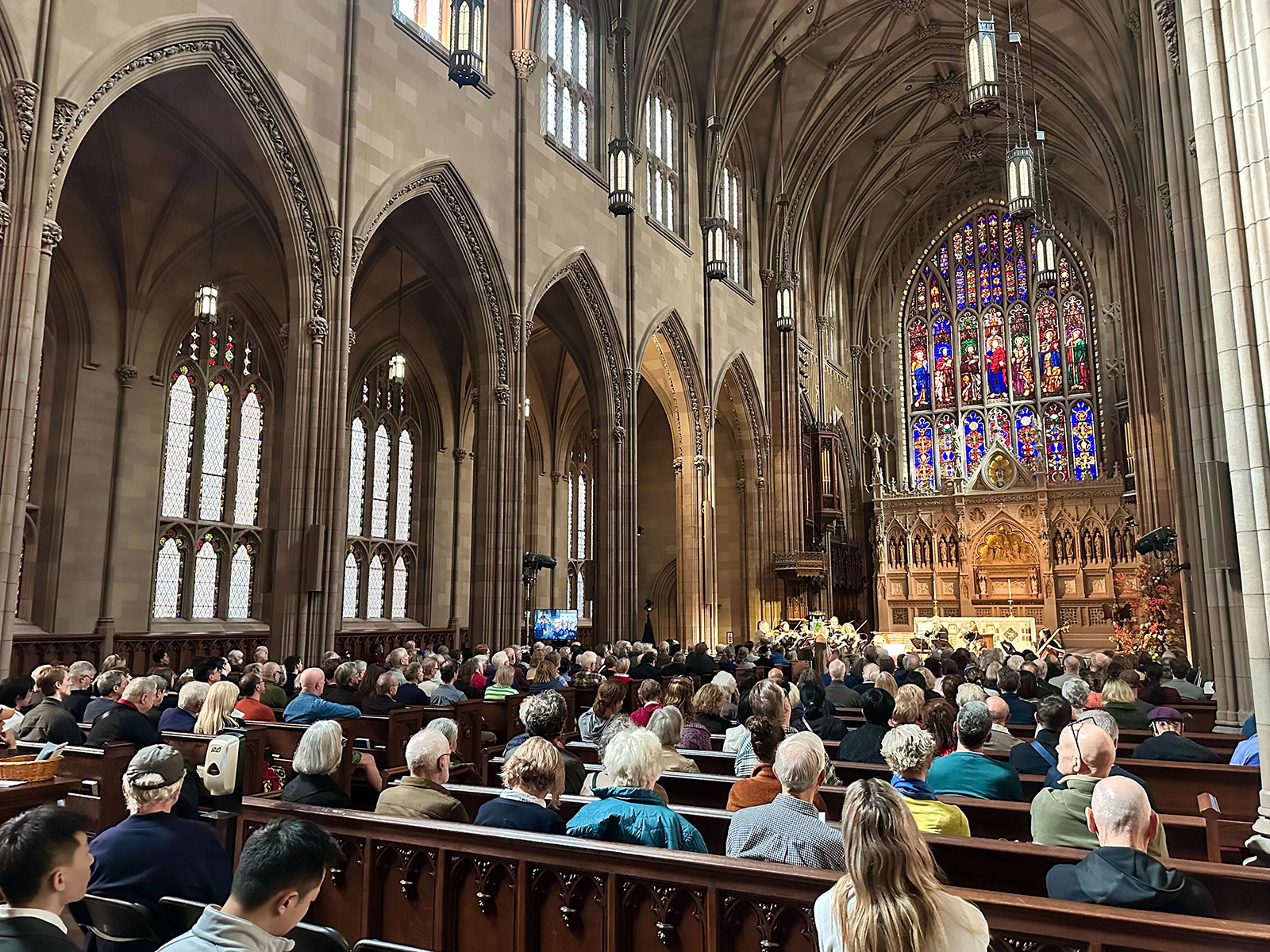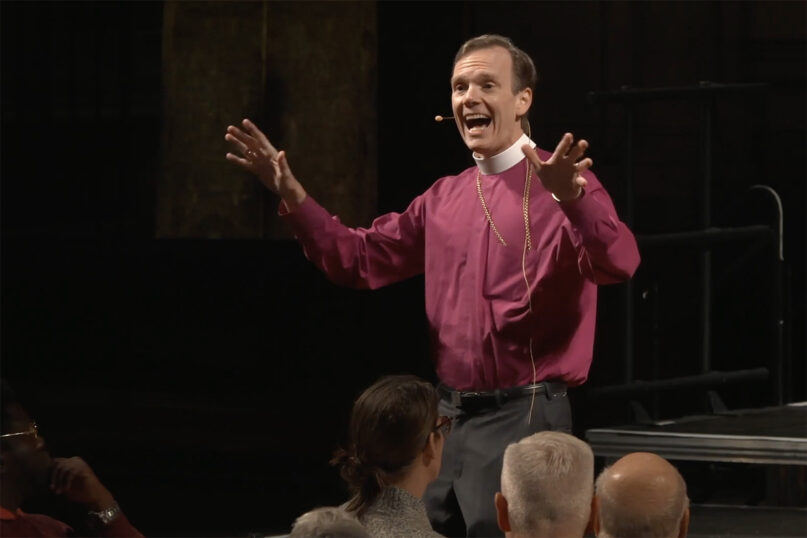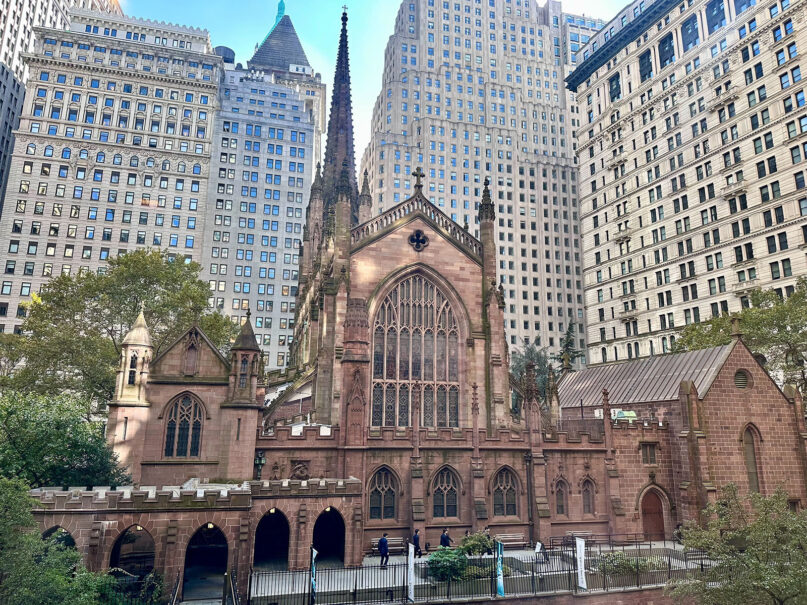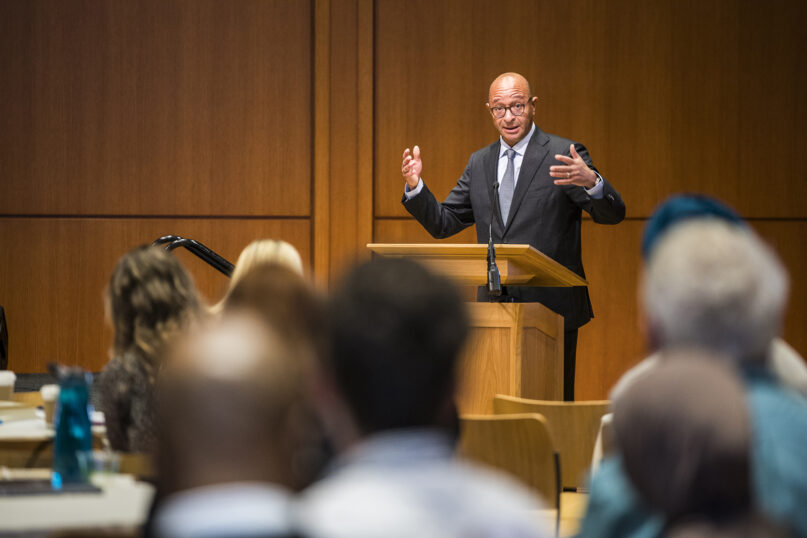
(RNS) — The Episcopal bishop of New York’s plan to solve the financial woes of his diocese involves having one of the wealthiest churches in the country pay for it.
But leaders at Trinity Church NYC are balking, saying the new funding plan is flawed.
A new Common Mission Share plan, passed Saturday (Nov. 15) at the Episcopal Diocese of New York’s 249th annual convention, would double the annual amount owed to the diocese by Trinity, while cutting costs for most other churches. Over the next 10 years, it would cost Trinity tens of millions of dollars, say church leaders — and make the parish responsible for about 60% of the diocese’s annual budget.
Before the vote, the Rev. Phillip A. Jackson, Trinity’s rector, said the plan wouldn’t work.
“Please understand that, if this resolution passes, we will not adhere to the new financial model,” he told delegates to the convention before they voted. “We will not pay the increased amount upon which the new mission share is entirely based.”
In an email, a spokesman for Trinity said that the church wants to partner with the diocese to solve its fiscal issues and to assist other churches. But the parish does not plan to increase its giving to the diocese despite the vote.
“Trinity has given the Diocese and its churches more than $33 million over the last six years, in addition to providing over $400 million in charitable giving to the broader New York community since 2019,” the church said in a statement. “It is our intent to continue to fund $4M a year to Diocese’s annual budget, as well as continuing the direct aid we have always offered to the churches in our Diocese.”
Founded in the 1690s on Wall Street, Trinity Church, now on Broadway facing the top of Wall, is one of the oldest and most prosperous congregations in New York City. Its land holdings once stretched nearly two miles up Manhattan’s west side.. Among those buried in the church graveyard are Alexander and Eliza Hamilton. The landmark served as a hub for rescue and recovery efforts after the attack on the World Trade Center in 2001.
Both New York Bishop Matthew Heyd and leaders at Trinity agree that things need to change, as the previous model for funding, set up in 1985, was not working.
“It’s been broken for a long time,” Heyd told delegates at the convention, held at the Cathedral Church of St. John the Divine in New York City. “Let me acknowledge today that the leadership of the diocese has broken faith because we knew it was unsustainable for many of our communities.”
As part of the plan, churches’ unpaid assessments, known as arrears, were forgiven. That’s important, Heyd told RNS, because churches that owed money — including some churches serving predominantly people of color — were cut off from financial assistance from the diocese.

Bishop Matthew Heyd addresses the Episcopal Diocese of New York’s 249th annual convention, Nov. 15, 2025, at the Cathedral Church of St. John the Divine in New York City. (Video screen grab)
“That lapse had real impact,” he said in an email. “For years, congregations with arrearages weren’t able to apply for diocesan property grants and other support, significantly disadvantaging their ministries.”
In his address to the convention, he said that forgiving the arrearages was “a jubilee moment,” referring to a biblical passage from the Book of Leviticus about forgiving debts. “The arrearage forgiveness is reparations,” he told the convention.
Heyd, who spent a decade on staff at Trinity, declined to say how much money had been forgiven.
The challenge of funding the Diocese of New York reflects larger changes in the religious landscape. Since 2000, the median size of congregations in the United States has dropped from 130 worshippers to 65, according to a Faith Communities Today study. And while most congregations are small, most people attend larger congregations.
According to official data from the Episcopal Church’s national office, average Sunday attendance for the Diocese of New York dropped from 16,878 in 2015 to 9,486 in 2024, a decline of 43.8%. Trinity, with 800 people on average attending on Sundays, is one of the largest churches in the diocese.
As congregations see attendance decline, many churches’ costs are increasing while giving is flat. That makes it harder for them to afford full-time clergy, maintain their aging buildings or pay their bills.

Trinity Church in lower Manhattan, Oct. 22, 2025, in New York City. (RNS photo/Kit Doyle)
Heyd said the diocese has closed churches that are no longer sustainable, including six this year. But he said the statistics don’t tell the whole story of the impact of local congregations and that about 40% of churches in the diocese are growing. Under the new formula, small churches with less than $250,000 in expenses will be asked to pay 1% to the diocese, while those with more than $250,000 will be asked to pay 5.75%.
Overall, Heyd said, almost all congregations will pay less under the new model.
“It differs what folks pay based on how big you are,” the bishop told convention delegates. “That’s just what it is. That’s why we call it common mission, and that’s what fair and equitable means.”
In an email, the bishop said that nearly 80% of delegates approved the plan and that the diocese is moving forward with it.
But leaders at Trinity Church say the new model adds $1.3 million to the diocese’s budget at a time when many churches are cutting costs. And giving more to the diocese could mean giving less to other ministries. Trinity currently runs an extensive after-school program for children in local schools and other outreach ministries.
They also said leaders of Trinity communicated their concerns about the new plan to the bishop before the vote.

The Rev. Phillip A. Jackson speaks at Trinity Church NYC, Oct. 22, 2025, in New York City. (RNS photo/Kisha Bari)
Jackson told delegates at the convention that Trinity wants to help the diocese, but the new plan doesn’t solve its problems. Rather than bringing churches together, he said, this plan divides them.
“For all the good and noble talk about the Diocese of New York being one church, division is being sown into the fabric of our churches,” he said. “There will be Trinity on the one hand, and everyone else on the other.”
Trinity representatives told RNS that the church is still open to helping the diocese.
“We are all aware of the critical need for fiscal and organizational reform to ensure the long-term solvency of our Diocese. Trinity would eagerly participate in such an effort intellectually, spiritually, and financially,” the church said in a statement. “But the request to more than double Trinity’s financial contributions without that plan — asking us to provide 62 percent of the organization’s annual budget — jeopardizes the future of our shared mission and takes money away from the people of our parish and our city while papering over the Diocese’s deep structural issues.”
